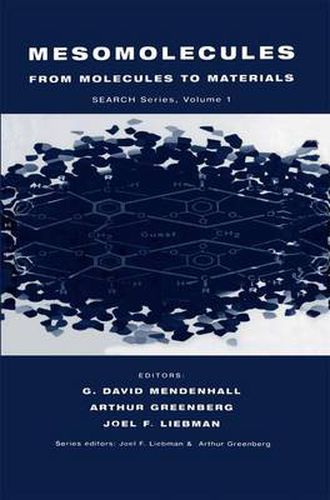Readings Newsletter
Become a Readings Member to make your shopping experience even easier.
Sign in or sign up for free!
You’re not far away from qualifying for FREE standard shipping within Australia
You’ve qualified for FREE standard shipping within Australia
The cart is loading…






This title is printed to order. This book may have been self-published. If so, we cannot guarantee the quality of the content. In the main most books will have gone through the editing process however some may not. We therefore suggest that you be aware of this before ordering this book. If in doubt check either the author or publisher’s details as we are unable to accept any returns unless they are faulty. Please contact us if you have any questions.
The title of this volume implies a progression of sorts from species of molecular size to a product described on the basis of continuum prop erties. The difference in approach from the standpoint of molecular be havior, on the one hand-more the forte of chemists-and from the standpoint of large-scale properties, on the other-more the province of chemical engineers and materials scientists-represents a severe cultural divide, but one with much potential for creative input from both sides. Chapter 1 of this volume attempts a broad survey of trends toward the synthesis of large, well-defined molecular systems with interesting physical, chemical, or material properties. Review articles with more de tailed treatments are emphasized. In Chapter 2, Newkome and Moore field summarize work on synthesis of /I cascade molecules. Next, Denti, Campagna, and Balzani describe the synthesis of assemblies with con nected metal-containing chromophore units which transmit electrons or electronic energy in defined ways. In Chapter 4 Wuest describes the con struction of hydrogen-bonded organic networks, and in Chapter 5 Michl defines a molecular-level construction set. Finally, Jaszczak points out how nature’s attempts over geological time spans are emulated by recent human synthetic activity in the fullerene arena, through the appearance of various morphologies of natural graphite. The book concludes with a method for describing fractal-like mole cules, and an index based on the method for appropriate compounds described in the text.
$9.00 standard shipping within Australia
FREE standard shipping within Australia for orders over $100.00
Express & International shipping calculated at checkout
This title is printed to order. This book may have been self-published. If so, we cannot guarantee the quality of the content. In the main most books will have gone through the editing process however some may not. We therefore suggest that you be aware of this before ordering this book. If in doubt check either the author or publisher’s details as we are unable to accept any returns unless they are faulty. Please contact us if you have any questions.
The title of this volume implies a progression of sorts from species of molecular size to a product described on the basis of continuum prop erties. The difference in approach from the standpoint of molecular be havior, on the one hand-more the forte of chemists-and from the standpoint of large-scale properties, on the other-more the province of chemical engineers and materials scientists-represents a severe cultural divide, but one with much potential for creative input from both sides. Chapter 1 of this volume attempts a broad survey of trends toward the synthesis of large, well-defined molecular systems with interesting physical, chemical, or material properties. Review articles with more de tailed treatments are emphasized. In Chapter 2, Newkome and Moore field summarize work on synthesis of /I cascade molecules. Next, Denti, Campagna, and Balzani describe the synthesis of assemblies with con nected metal-containing chromophore units which transmit electrons or electronic energy in defined ways. In Chapter 4 Wuest describes the con struction of hydrogen-bonded organic networks, and in Chapter 5 Michl defines a molecular-level construction set. Finally, Jaszczak points out how nature’s attempts over geological time spans are emulated by recent human synthetic activity in the fullerene arena, through the appearance of various morphologies of natural graphite. The book concludes with a method for describing fractal-like mole cules, and an index based on the method for appropriate compounds described in the text.